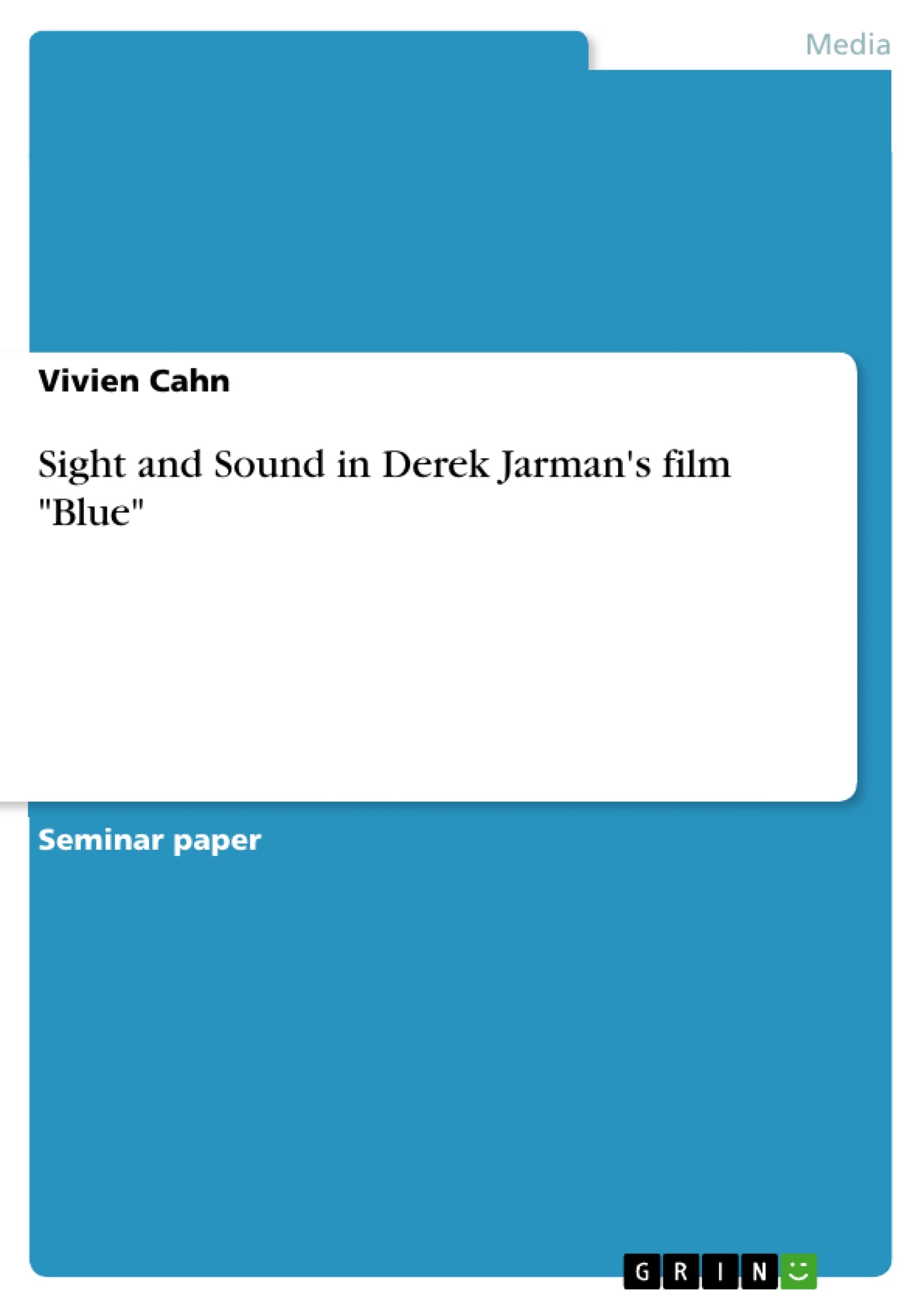At the outset of this paper, I will examine the development of the film’s aesthetic form, its place in the director’s oeuvre and the cultural and historical context of its release. Thereafter, I will take a closer look at the static cinema and re-evaluate the essential qualities of film. Elaborating on the theoretical considerations of Michel Chion (1994; 1999; 2003), I aim to gain a better understanding of the importance of sound in "Blue". In the subsequent chapter, I will explore the concept of invisibility and the film‘s political significance with regard to the AIDS epidemic and its effects on the LGBT community. Taking into account Vivian Sobchacks’s (2011) phenomenological reading of the film, I will finally analyse the audio-visual experience of "Blue" and the peculiar relation between its images, its sounds and its spectator.
Table of Contents
- Introduction
- General information
- The film: Development of Blue
- The director: Derek Jarman
- The context: New Queer Cinema
- Analysis
- The essence of cinema
- Seeing and hearing
- Visibility and representation
- The experience of the spectator/listener
- Conclusion
Objectives and Key Themes
This paper examines Derek Jarman's film "Blue" (1993) and its significance in the context of experimental filmmaking, the AIDS epidemic, and visual culture. The paper aims to analyze the film's aesthetic form, its relationship to sound, the concept of invisibility, and the experience of the spectator.
- The development and aesthetic form of "Blue"
- The role of sound in a visually static film
- The significance of invisibility and the representation of AIDS
- The spectator's experience of the film's unique audio-visual elements
- The film's relationship to Derek Jarman's wider body of work and the New Queer Cinema movement
Chapter Summaries
The introduction provides a brief overview of "Blue" and its context, highlighting the film's unique visual and auditory elements. The chapter focuses on the director's use of color, sound, and narration to convey the experience of AIDS, blindness, and mortality.
The first chapter discusses the development of "Blue" from its initial conception as a tribute to Yves Klein to its eventual cinematic release. It explores the film's relation to Klein's concept of "immateriality" and its evolution from a multimedia performance to a gallery installation and finally to a film. It also introduces the film's unique soundtrack and its impact on the spectator's experience.
The second chapter provides biographical information about Derek Jarman and his career as a filmmaker, artist, and writer. It explores his interest in challenging conventional filmmaking techniques and his commitment to representing LGBTQ+ experiences. The chapter also examines how Jarman's political activism influenced his work and his approach to representation.
The third chapter delves into the concept of invisibility in "Blue" and its relation to the AIDS epidemic and its impact on the LGBTQ+ community. It explores the film's political significance as a critique of dominant heteronormative representations and its exploration of the experience of illness, death, and loss.
Keywords
The primary keywords and focus topics of the text are "Blue," Derek Jarman, New Queer Cinema, experimental film, sound design, visual culture, AIDS, invisibility, representation, and the experience of the spectator.
- Citation du texte
- Vivien Cahn (Auteur), 2015, Sight and Sound in Derek Jarman's film "Blue", Munich, GRIN Verlag, https://www.grin.com/document/376175



